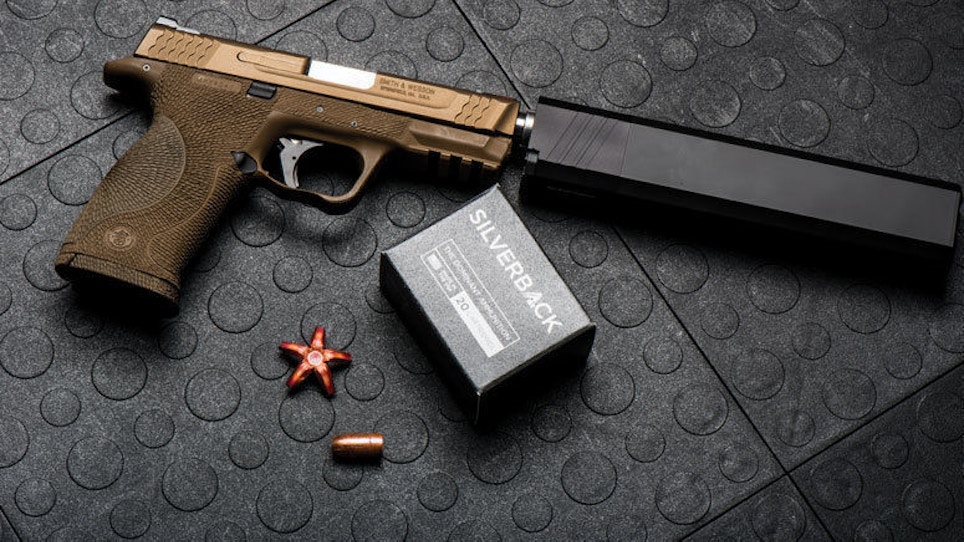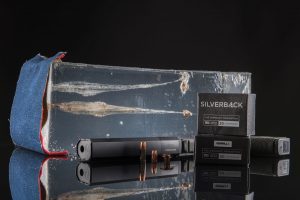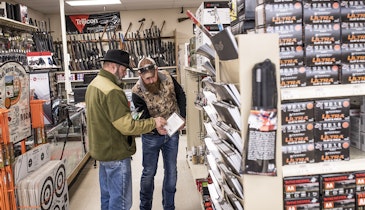Many customers are interested in the latest and greatest tactical firearms they have seen online or in glossy-print magazines. Even video games promote the newest tactical rifles and pistols with accurate images and descriptions. However, the ammunition rarely receives that same level of attention or appreciation, which is a shame because a gun only functions as well as the ammunition you feed into it.
Customers who are unfamiliar with the specifics of ballistics, velocity, bullet weight and design, and terminal performance will simply pick out whatever is cheapest. However, tactical retailers who take the time to learn their customers’ needs and educate them on the differences in ammunition can have significant upsell potential for premium ammunition.
In my experience, far too many people have become spoiled thinking that if they have a good rifle and a good optic, then every group should be sub-MOA. This used to be the Holy Grail for rifle builders and meticulous handloaders. Today, that is entirely possible in many quality rifles, but only with the right match-grade ammunition.
Bullet designers and ammunition manufacturers are well aware of that and have placed renewed emphasis on terminal performance both for hunting and self-defense. This improvement is palpable and most noticeable in the Federal Bureau of Investigation’s (FBI) recent switch from the .40 S&W back to the 9mm. The reason was that the performance of modern defensive ammunition has so vastly improved that the differences between the two didn’t justify the higher recoil and reduced magazine capacity of the .40-caliber.
One manufacturer that has been focusing its efforts on producing the highest quality of ammunition possible is Gorilla Ammunition. The company has only been around for a few years and offers a limited selection of the most popular calibers including .223 Remington, 300 Blackout, .260 Remington, .308 Winchester, .380 ACP, 9mm Luger, and .45 ACP. The company cannot match the high output production of major ammunition makers, but that actually plays to its strengths.
Gorilla Ammunition’s focus is on quality and performance, not mass-produced quantity. As a result, the company can boast that it has the lowest standard deviation in muzzle velocity of any manufacturer. That guarantees absolute shot-to-shot consistency and improved accuracy. That is not an insignificant achievement and requires extreme care in the manufacturing process for consistent quality control. Gorilla Ammunition is able to do this by having its own in-house ballistic laboratory, which is rare with many ammunition manufacturers.
The company specializes in offering match-grade ammunition designed for supreme accuracy, but also offers a line of “Troop” ammunition that is remanufactured from once-fired brass to the same exacting standards as factory new ammunition. The main advantage is the reduced cost of the re-used brass resulting in a better value for high volume shooters.
The company’s latest offering is mission-designed for self-defense use in multiple platforms. The new Silverback ammunition is made from solid copper bullets that offer several advantages. First, there is no need to worry about separation as there is no jacket and the bullet does not have to be bonded to perform, especially through barriers. Second, there is no concern for lead contamination, especially for indoor ranges or when shooting at steel targets.
The bullet design is unique as well. It features a large, deep hollow point design in the pistol ammunition with deep cuts from the hollow point down the sides. By using a special annealing process that heats the metal, the bullet expands to three times its original diameter while maintaining 100-percent weight retention. That produces a large permanent wound cavity and consistent penetration. The bullets in this special line are all “precisely CNC Swiss lathe turned,” according to Gorilla Ammunition.
All chamberings in this line also feature “factory-new nickel-coated brass cases.” The nickel coating helps prevent corrosion of the brass case, which can be a concern for defensive ammunition that is carried in heat and humidity over long periods of time. It also does not expand as much when fired, which aids in case extraction and reliability, especially in semi-automatic firearms.
I had the opportunity to test and observe the performance of this ammunition in ballistic gelatin at a recent event at Guardian Corporation’s Charles City, Virginia, facility for the 2nd Annual Media Range Day hosted by American Built Arms Company. Specifically, I tested the 230-grain .45 ACP loading into a block of ballistic gelatin, and it produced a consistent 12 to 13 inches of penetration expanding to nearly 1.5 inches in diameter. When recovered, the five petals of the expanded bullet neatly and perfectly formed the image of a starfish on the front with each petal perpendicular to the base of the bullet.
Gorilla Silverback ammunition is available in several loads, including a 95-grain .380 ACP. This particular load is designed for use in compact concealed-carry pistols and produces a muzzle velocity of 850 fps. Performance is also solid with a reliable and consistent 10 inches of penetration and expansion to one inch.
In 9mm Luger, Gorilla Silverback offers two loads. The 135-grain is designed to be subsonic at 900 fps and is used in suppressed weapons and as an ideal home-defense load that will avoid over-penetration of interior walls. In ballistic gelatin, this load produces 11 inches of penetration. A 115-grain 9mm Luger is also available that produces 1,200 fps of muzzle velocity. With 12 inches of penetration, this load is designed for personal protection outside the home, as well as law enforcement use.
Two loads are also available in the venerable .45 ACP. Both are 230 grains, but the FBI Penetration load is specifically designed to meet or exceed the FBI’s bullet performance protocols that call for enhanced penetration and expansion. Velocity and weight is the same for both .45ACP loads, but the difference in the FBI load is the bullet design, which features an aggressive groove at the lower end of the bullet before it meets the case. The effect is 14 inches of penetration into ballistic gelatin.
For tactical rifle users, Gorilla Silverback Ammunition offers two loadings in the increasingly popular .300 Blackout. A 205-grain subsonic load produces a muzzle velocity of 1,040 fps and an impressive 17 inches of penetration with full expansion and an open tip design. The effect on game animals is significant, and many more states are allowing suppressors for hunting. The self-defense load in this chambering may seem light at 85 grains, but it generates a muzzle velocity of 2,550 fps. It offers a flatter shooting longer range projectile with 13 inches of penetration at shorter ranges and less expansion with more penetration at longer ranges. However, this velocity with this tipped bullet produces a huge temporary wound cavity and massive hydrostatic shock in soft tissue that greatly expands the permanent wound.
Premium ammunition comes at a premium cost, but when the benefits are fully explained and demonstrated to customers (Gorilla Ammunition features slow motion videos of its ballistic gelatin tests on its website), they are much more willing to buy it, especially for home or self-defense applications.







